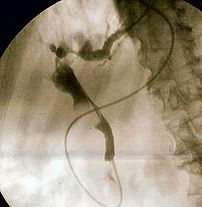[amazon_link asins=’0199565864,0071761217,0199768897,0323340628,0192632558,935152339X,1620231158,3319230530,0387005897′ template=’ProductCarousel’ store=’finmeacur-20′ marketplace=’US’ link_id=’6b31253e-0970-11e8-adc1-3154197f16f9′]
Definition :
A pancreas transplant is surgery to implant a healthy pancreas from a donor into a patient with diabetes. Pancreas transplants give the patient a chance to become independent of insulin injections.
click to see the pictures—> (01).....(1)..…....(2)....…..
A pancreas transplant is an organ transplant that involves implanting a healthy pancreas (one that can produce insulin) into a person who usually has diabetes. Because the pancreas is a vital organ, performing functions necessary in the digestion process, the recipient’s native pancreas is left in place, and the donated pancreas is attached in a different location. In the event of rejection of the new pancreas which would quickly cause life-threatening diabetes, the recipient could not survive without the native pancreas still in place. The healthy pancreas comes from a donor who has just died or it may be a partial pancreas from a living donor. Whole pancreas transplants from living donors are not possible, again because the pancreas is a necessary organ for digestion. At present, pancreas transplants are usually performed in persons with insulin-dependent diabetes, who have severe complications that are usually of a renal nature. Patients with pancreatic cancer are not eligible for valuable pancreatic transplantations, since the condition has a very high mortality rate and the disease, being highly malignant, could and probably would soon return.
Description :
The healthy pancreas is obtained from a donor who has suffered brain-death, but remains on life-support. The donor pancreas must meet numerous criteria to make sure it is suitable.
In addition to insulin, the pancreas produces other secretions, such as digestive enzymes, which drain through the pancreatic duct into the duodenum. Therefore, a portion of the duodenum is removed with the donor pancreas. The healthy pancreas is transported in a cooled solution that preserves the organ for up to 20 hours.
The patient’s diseased pancreas is not removed during the operation. The donor pancreas is usually inserted in the right lower portion of the patient’s abdomen and attachments are made to the patient’s blood vessels. The donor duodenum is attached to the patient’s intestine or bladder to drain pancreatic secretions.
The operation is usually done at the same time as a kidney transplant in diabetic patients with kidney disease.
Types:
There are three main types of pancreas transplantation:
*Simultaneous pancreas-kidney transplant (SPK), when the pancreas and kidney are transplanted simultaneously from the same deceased donor....CLICK & SEE
*Pancreas-after-kidney transplant (PAK), when a cadaveric, or deceased, donor pancreas transplant is performed after a previous, and different, living or deceased donor kidney transplant....CLICK & SEE
*Pancreas transplant alone, for the patient with type 1 diabetes who usually has severe, frequent hypoglycemia, but adequate kidney function…..CLICK & SEE
Indications:
In most cases, pancreas transplantation is performed on individuals with type 1 diabetes with end-stage renal disease The majority of pancreas transplantations (>90%) are simultaneous pancreas-kidney transplantions.
Why the Procedure is Performed :
A pancreas transplant may be recommended for people with pancreatic disease, especially if they have type 1 diabetes and poor kidney function.
Pancreas transplant surgery is not recommended for patients who have:
*Heart or lung disease
*Other life-threatening diseases
Solitary pancreas transplant for diabetes, without simultaneous kidney transplant, remains controversial.
Risks Factor:
The risks for any anesthesia are:
*Heart attack
*Reactions to medications
*Problems breathing
The risks for any surgery are:
*Bleeding
*Infection
*Scar formation
The body’s immune system considers the transplanted organ foreign, and fights it accordingly. Thus, to prevent rejection, organ transplant patients must take drugs (such as cyclosporine and corticosteroids) that suppress the immune response of the body. The disadvantage of these drugs is that they weaken the body’s natural defense against various infections.
Preservation until implantation:
The donor’s blood in the pancreatic tissue will be replaced by an ice-cold organ storage solution, such as UW (Viaspan) or HTK until the allograft pancreatic tissue is implanted.
Complications:
Complications immediately after surgery include rejection, thrombosis, pancreatitis and infection.
Prognosis:
The prognosis after pancreas transplantation is very good. Over the recent years, long-term success has improved and risks have decreased. One year after transplantation more than 95% of all patients are still alive and 80-85% of all pancreases are still functional. After transplantation patients need lifelong immunosuppression. Immunosuppression increases the risk for a number of different kinds of infection and cancer.
The main problem, as with other transplants, is graft rejection. Immunosuppressive drugs, which weaken your body’s ability to fight infections, must be taken indefinitely. Normal activities can resume as soon as you are strong enough, and after consulting with the doctor. It is possible to have children after a transplant.
The major problems with all organ transplants are:
*Finding a donor
*Preventing rejection
*Long-term immunosuppression
Recovery :
It usually takes about 3 weeks to recover. Move your legs often to reduce the risk of blood clots or deep vein thrombosis. The sutures or clips are removed about two to three weeks after surgery. Resume normal activity as soon as possible, after consulting with the physician. A diet will be prescribed.
Resources:
http://www.nlm.nih.gov/medlineplus/ency/article/003007.htm
http://en.wikipedia.org/wiki/Pancreas_transplantation
Related articles by Zemanta
- Pancreatic Cancer – Causes, Symptoms and Treatment (articlesbase.com)
- Who Have Higher Risk of Diabetes? (articlesbase.com)









![Reblog this post [with Zemanta]](https://i0.wp.com/img.zemanta.com/reblog_e.png?w=580)


















 [amazon_link asins=’B078C6B85J,1284144968,0123965217,9402408428,1608058093,1608056015,128402685X,1608058859,1897025408′ template=’ProductCarousel’ store=’finmeacur-20′ marketplace=’US’ link_id=’2de4167c-1201-11e8-9e6a-b35370d32cb2′]
[amazon_link asins=’B078C6B85J,1284144968,0123965217,9402408428,1608058093,1608056015,128402685X,1608058859,1897025408′ template=’ProductCarousel’ store=’finmeacur-20′ marketplace=’US’ link_id=’2de4167c-1201-11e8-9e6a-b35370d32cb2′]